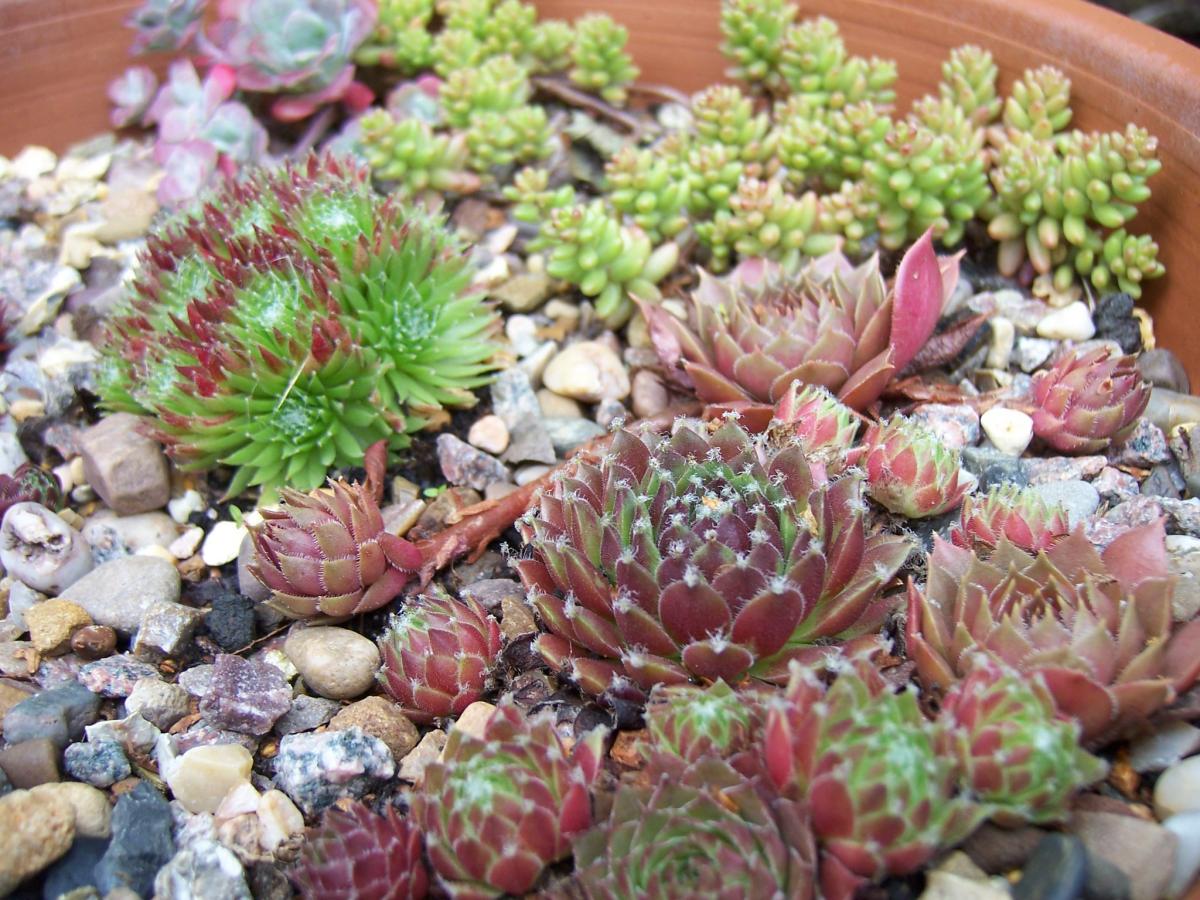
Image - Flickr / stephen boisvert
The Sempervivum are one of the succulent plants that best resist the cold; in fact, they are probably the most rustic, since They can withstand temperatures of up to 20 degrees below zero.. Of course, they do not like the extreme heat that can exist in areas such as the Spanish Mediterranean, but in those places they can be had without problems if they are protected from direct sunlight.
But the question is: How many types of Sempervivum are there? Well, around 30 species have been described, although unfortunately not all of them are commercialized. Here we will see those that can be found relatively easily for sale in nurseries and garden stores.
10 varieties of Sempervivum
Take a look at those that are easier to get:
Sempervivum arachnoideum
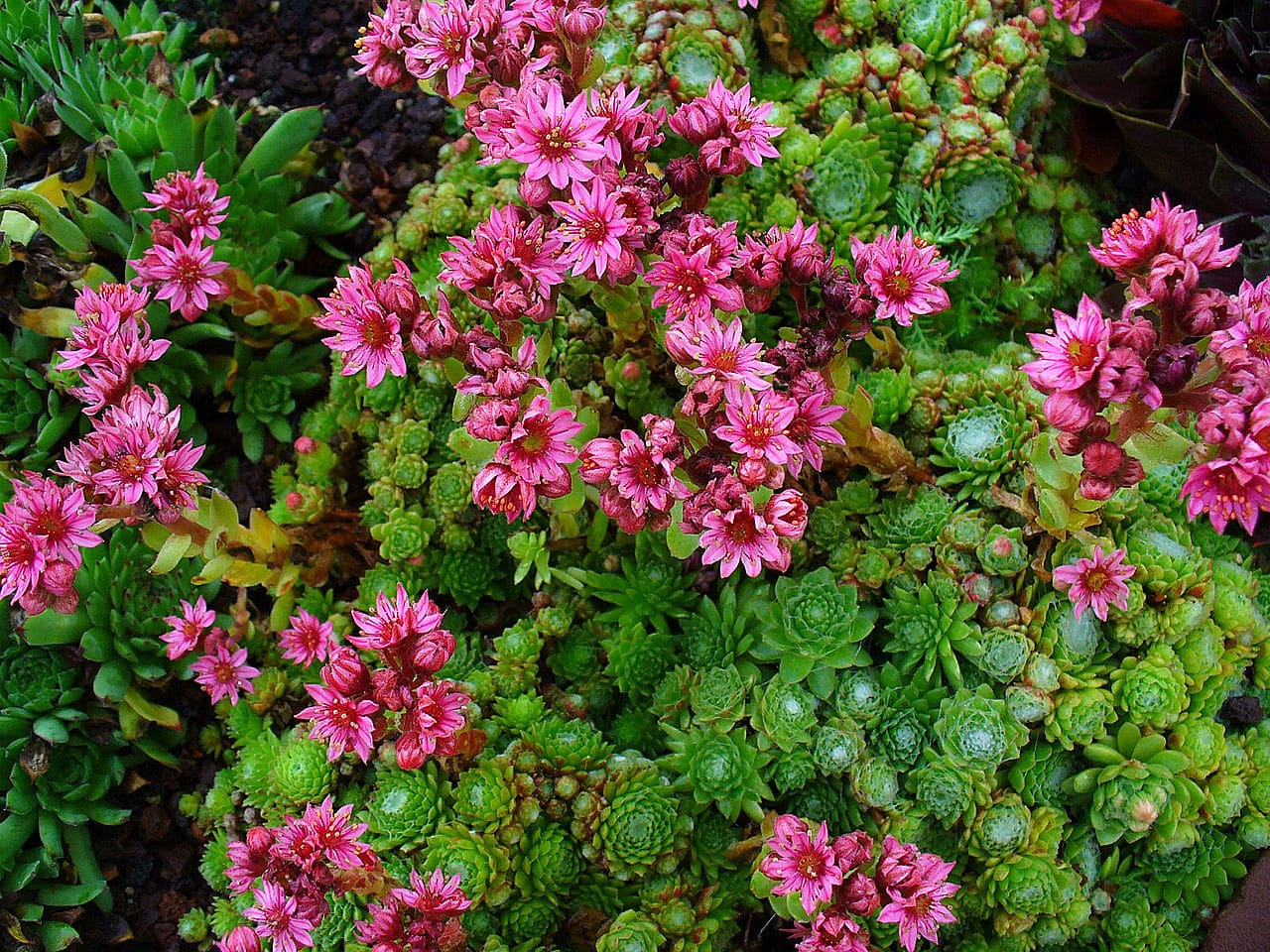
Image - Wikimedia / H. Zell
El Sempervivum arachnoideum It is the most curious species, since it seems that the center of each rosette is full of spider webs, which is why it is called spider everlasting or cobweb everlasting. It is native to the Alps, and has green leaves that are grouped together to form a basal rosette. It is about 8 centimeters tall, and like all varieties, it tends to produce suckers, which is why it can reach 30 centimeters wide.
Sempervivum calcareum
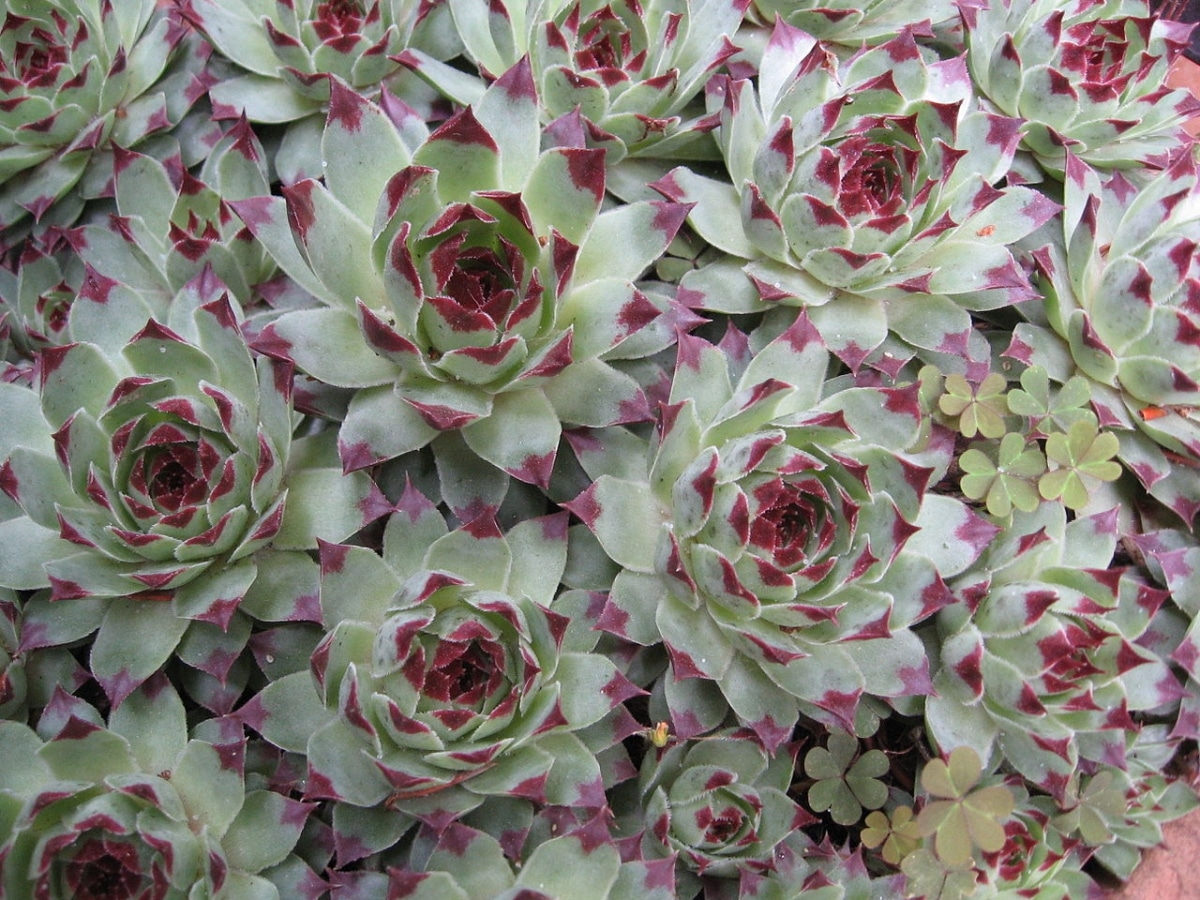
Image - Wikimedia / Cillas
El Sempervivum calcareum is a plant also native to the Alps, which reaches a height of about 10 centimeters and a width of about 40 centimeters -including the suckers-. It forms rosettes of bluish-green or glaucous leaves with red tips. Several cultivars have been obtained from it, such as 'Extra' or 'Guillaume'.
Sempervivum ciliosum
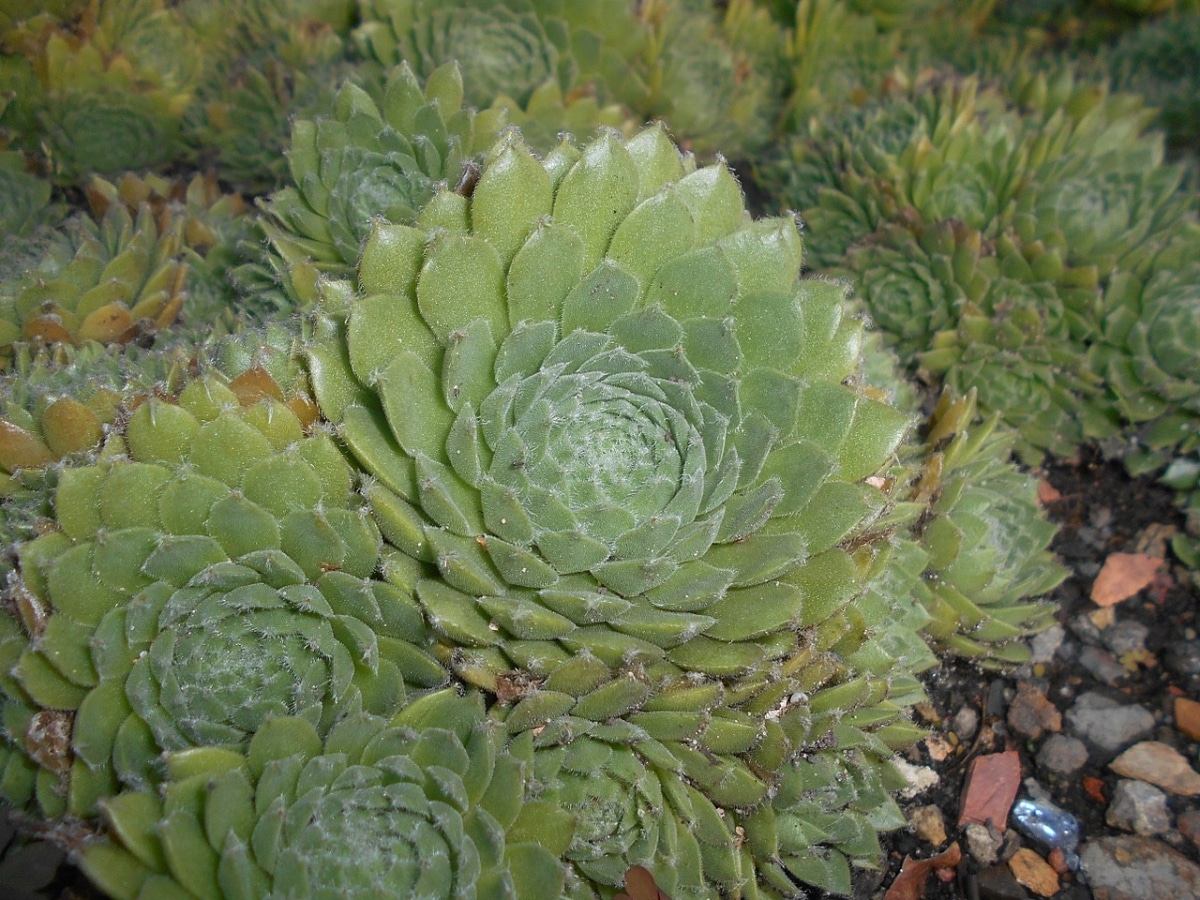
Image - Wikimedia / Salicyna
El Sempervivum ciliosum It is a species native to southeastern Europe. It reaches 10 centimeters in height and can measure up to half a meter in width.. It can be confused with S. calcareum, but this one has green leaves, with only a reddish dot that can go unnoticed at the end of them.
Sempervivum grandiflorum
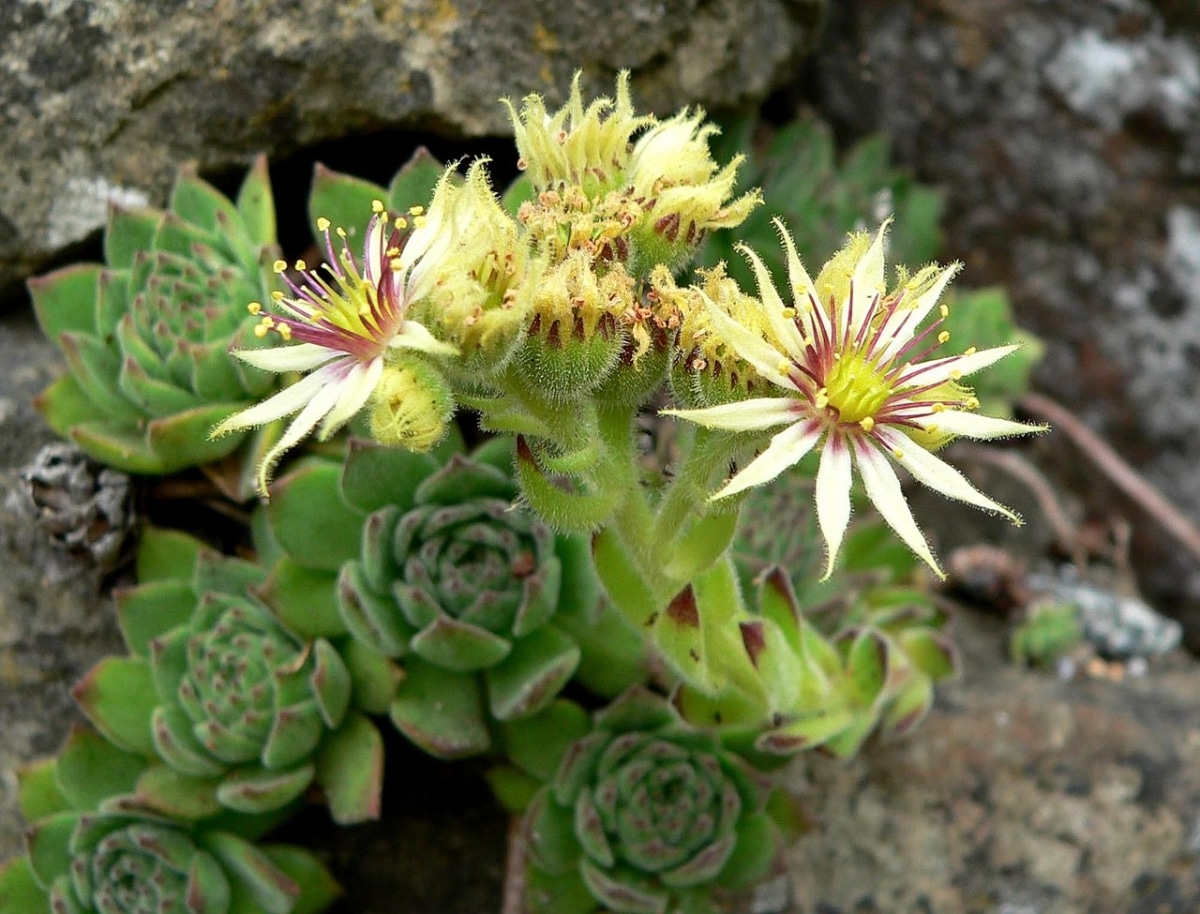
Image - Wikimedia / Stan Shebs
El Sempervivum grandiflorum is a succulent native to Italy and Switzerland that reaches an approximate height of about 7 centimeters and a width of about 35 centimeters. It grows forming rosettes of green leaves with red tips. The surname "grandiflorum" refers to the flowers, which are somewhat larger than those of other species, measuring almost 2 centimeters in diameter.
Sempervivum globiferum
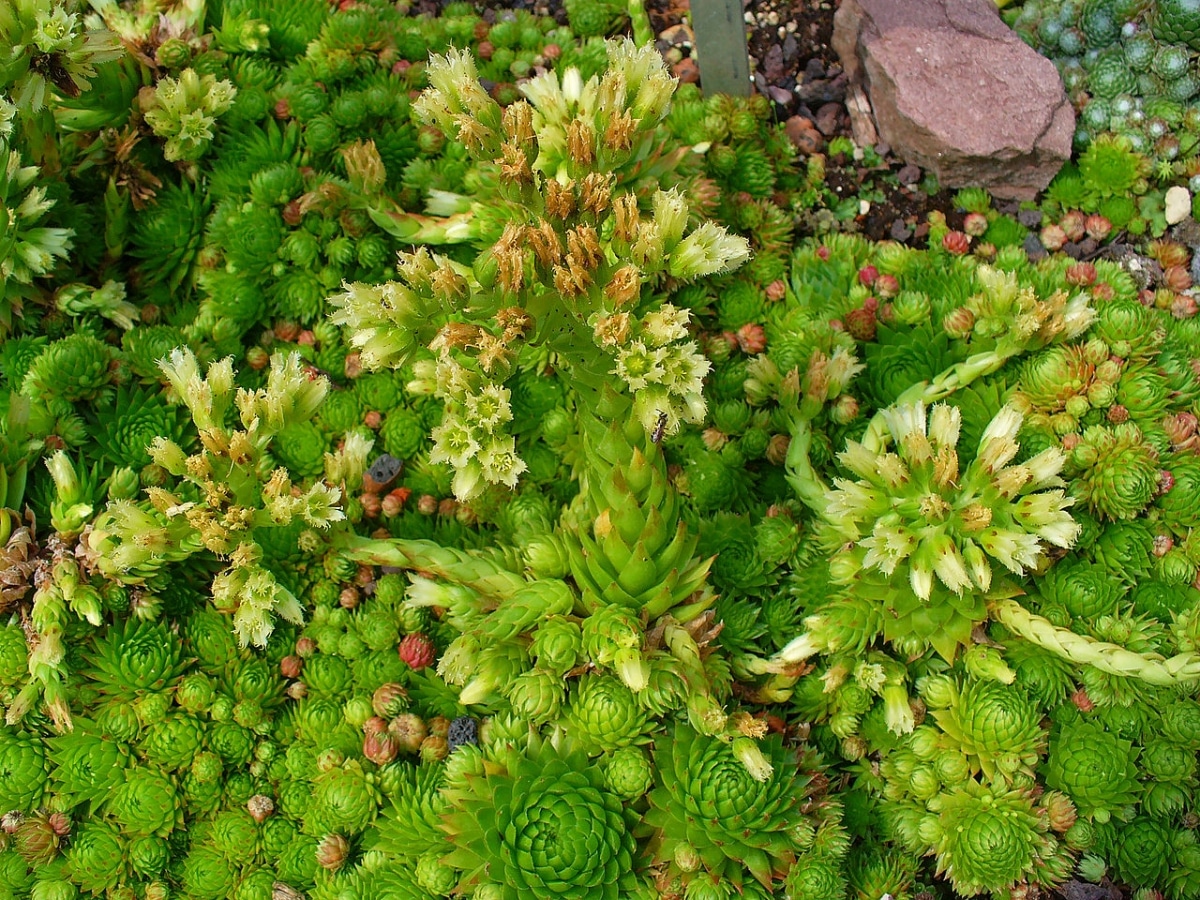
Image - Wikimedia / H. Zell
El Sempervivum globiferum it is one of the many species that grow in Europe. This is found in the Alps, Carpathians and in Russia. Unlike others, it develops rosettes of leaves with a spherical or globose shape, hence the surname »globiferum», which means globe-shaped. This is green, but if it is very exposed to the sun, it acquires reddish tones. It can measure about 6 centimeters high by about 40 centimeters in diameter.
Sempervivum heuffelii

Image - Wikimedia / Guérin Nicolas
El Sempervivum heuffelii It is a succulent plant that grows in Europe, specifically in Greece, Bulgaria or Romania, among others. It grows forming rosettes of green leaves with reddish tips that They can measure about 8 centimeters high by about 40 centimeters wide..
Sempervivum macedonicum
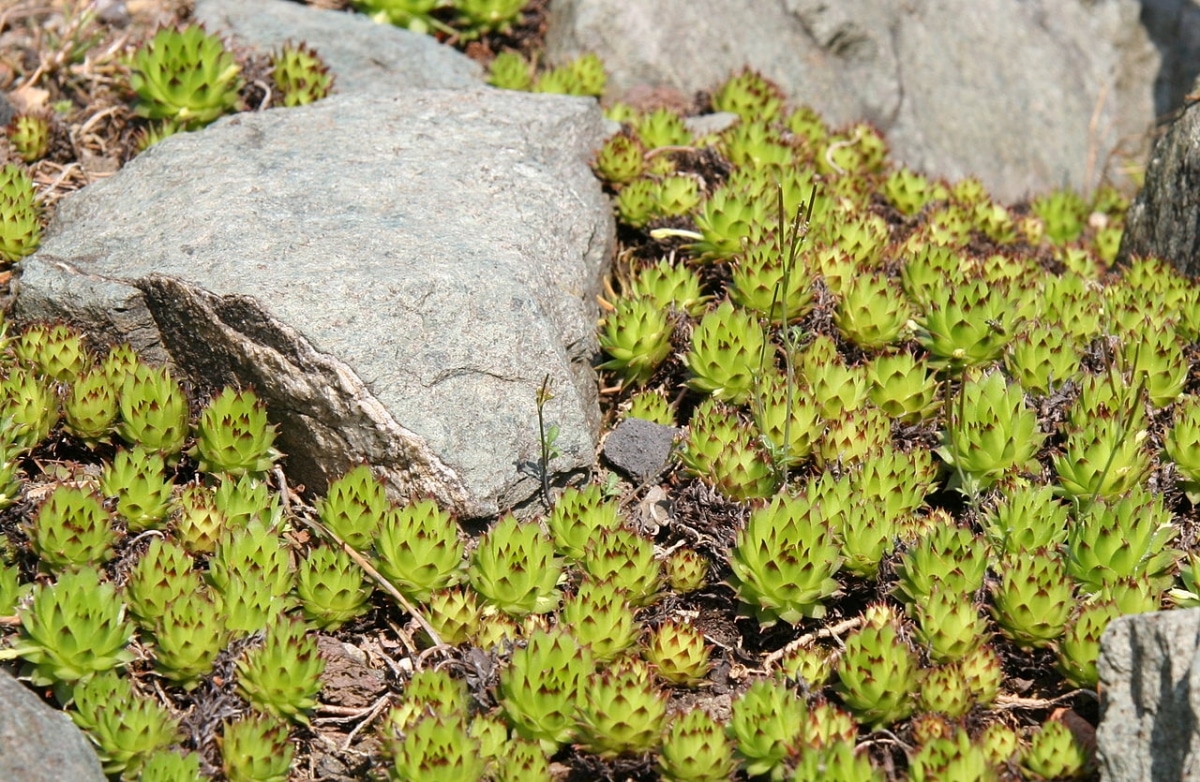
Image - Wikimedia / Michael Wolf
El Sempervivum macedonicum It is a variety native to Europe that forms rosettes of green leaves with dark red tips. These they measure about 5-7 centimeters in diameter by about 7 centimeters high. Of course, think that it can take out suckers, so it is important that it is planted in a wide pot.
Sempervivum montanum
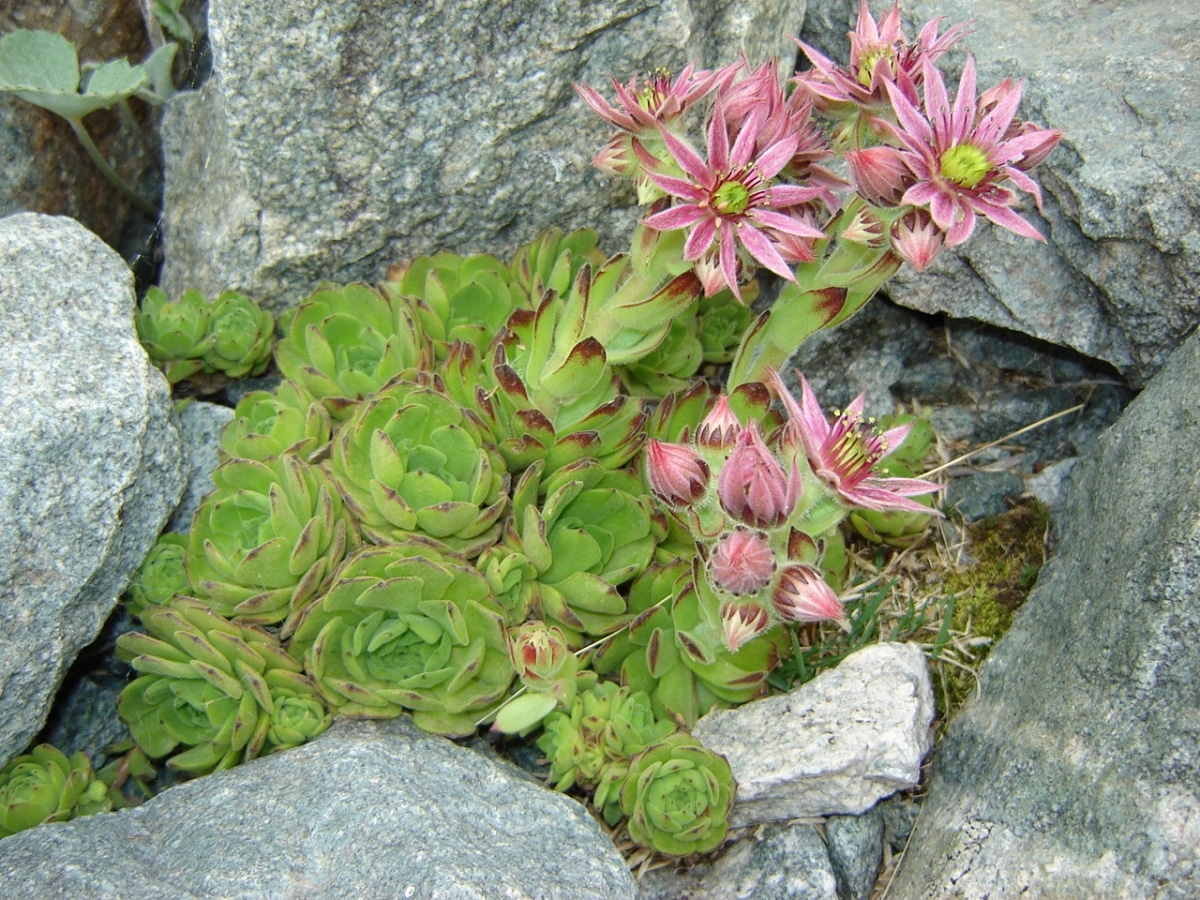
Image - Wikimedia / Rémih
El Sempervivum montanum It is a variety native to the Pyrenees, Alps and Corsica. It only grows up to 5 centimeters in height, but adding the suckers it can reach 40 or 50 centimeters in width.. The leaves are green, with reddish tips, and hairy.
Sempervivum tectorum
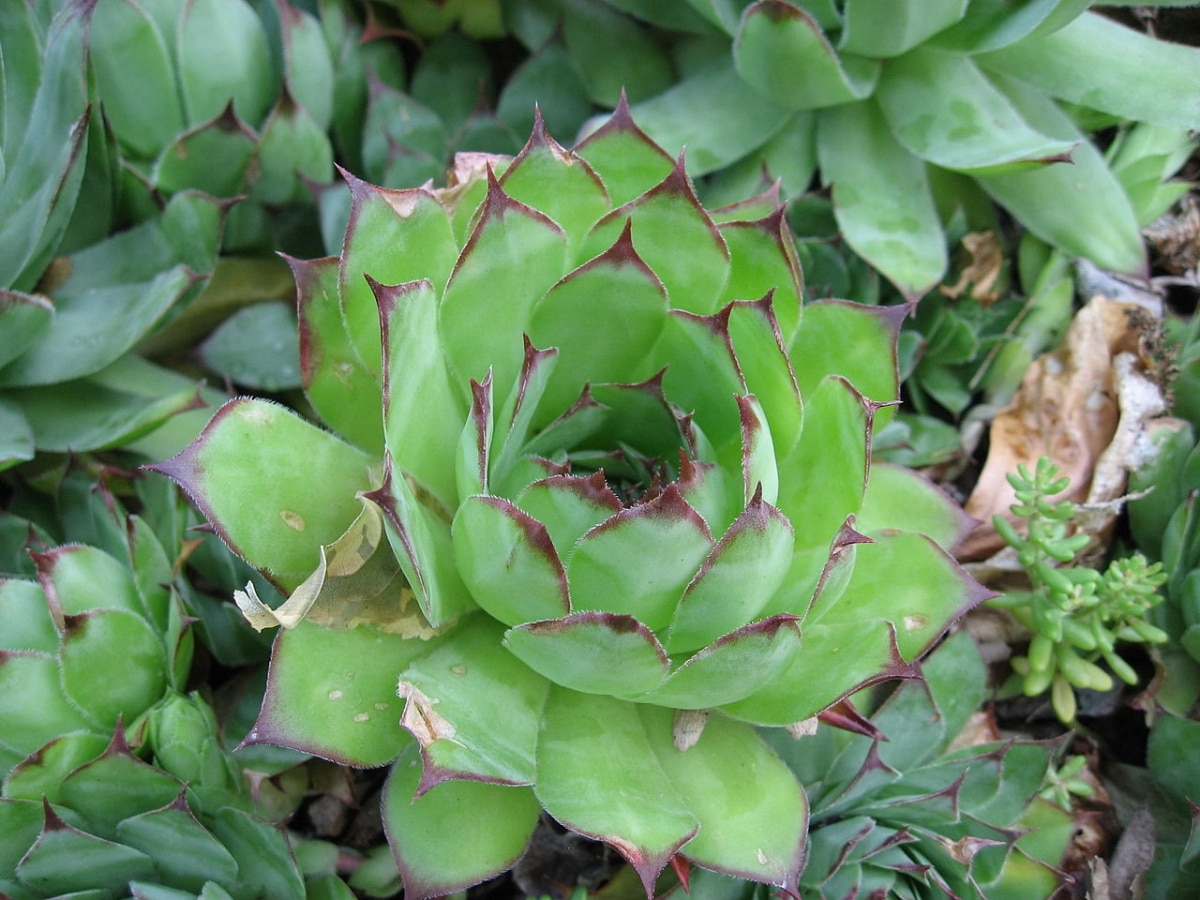
Image - Wikimedia / Liné1
El Sempervivum tectorum It is a plant known by the name of immortelle of the roofs, native to the Pyrenees, Balkans and the Alps. It grows up to 30 centimeters tall, and can be up to 30 centimeters wide.. The rosettes are green with red tips.
Sempervivum vicentei

Image - Flickr / José María Escolano
El Sempervivum vicentei It is a succulent native to Europe. Its leaves form rosettes of about 9 centimeters in diameter by about 5 centimeters high., and are green with purple tips.
How are they cared for?
To finish, if you plan to get some, or if you already have them and you don't know how to take care of them, don't worry. Here's how to take care of it:
- Location: they are succulents that resist the cold well, so the best thing we can do is leave them outside. And if we also live in an area where summers are very hot, with temperatures of more than 30ºC, we will leave them in shade or semi-shade.
- Earth: if they are going to be in pots, we will put a substrate for cacti and succulents like this; and if they will be in the garden, it is important that the soil has good drainage, that is, that it does not get waterlogged.
- Irrigation: they only have to be watered when the soil is dry.
- Subscriber: we can fertilize them during the spring and summer with a fertilizer for succulents such as this following the directions for use.
- Multiplication: the easiest and fastest way to get new specimens is by separating the suckers in spring or summer, and planting them in pots.
Where to buy sempervivum?
You can get them by clicking below:
Which of these different types of sempervivum that we have shown you did you like the most?
